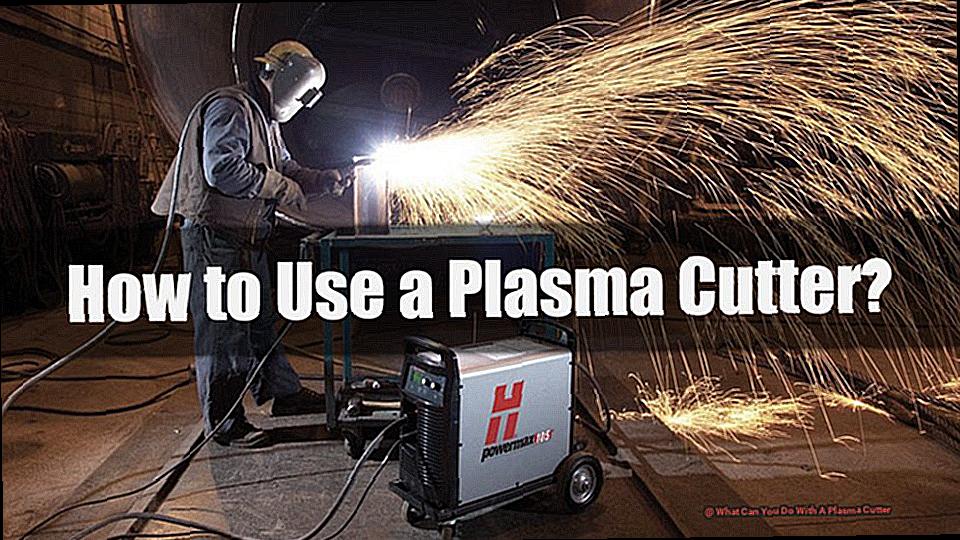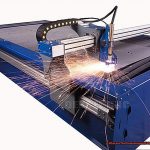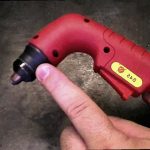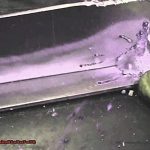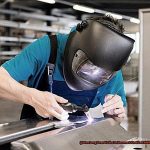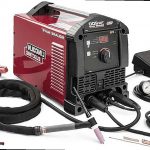Today, we’re thrilled to delve into a specific type of welding rod that has been causing quite a stir in the industry: 8010 g welding rods. You may be wondering what sets these rods apart from the rest and why they deserve their own dedicated post.
Well, let us tell you – these rods are not your run-of-the-mill welding tool. They have been meticulously crafted for high-strength applications and offer unparalleled weld quality, making them a top choice among skilled welders.
So whether you’re a seasoned pro or just starting out on your welding journey, join us as we uncover the purpose and advantages of 8010 g welding rods.
8010-P1 welding rod
Contents
When it comes to welding, selecting the appropriate electrode can have a significant impact. For high silicon pipelines, the clear choice is the E800-G welding rod. But what distinguishes this rod from its counterpart, the E800? Let’s delve into the details and comprehend why the increased silicon content in E800-G makes it the perfect option for high silicon pipelines.
The Silicon Showdown:
Silicon plays a vital role in welding rods as it aids in deoxidizing the weld metal and improving its mechanical properties. The E800-G welding rod contains a higher silicon content of 0.80%, making it well-suited for welding on high silicon pipelines. In contrast, the E800 has a lower silicon content of 0.6%, making it more suitable for general welding purposes.
Why Opt for E800-G for High Silicon Pipelines?
The augmented silicon content in E800-G ensures that the weld metal remains flexible and can withstand high temperatures. This is especially crucial in high silicon pipelines where the welds are constantly exposed to extreme heat and stress. Additionally, with its lighter slag, E800-G provides superior penetration and arc stability, making it easier to use for vertical welding applications.
The 8010-P1 Advantage:
Both 8010-P1 and 8010G are popular options for vertical down welding on pipelines. However, what sets 8010-P1 apart is its specific designation for pipeline steel welding. This indicates that it is specifically designed to meet the requirements of pipeline welding, making it a more convenient and efficient option for this type of project.
Chemical Composition Matters:
Apart from their silicon content, both E800-G and E800 have similar chemical compositions. They both contain elements such as carbon, manganese, nickel, chromium, molybdenum, vanadium, and ferrous elements, which contribute to their high tensile strength and ideal root pass properties.
8010G welding rod
The 8010G welding rod is a true marvel in the world of welding. This versatile and efficient tool has quickly become a go-to choice for welding large-diameter pipe lines in the vertical-down position. Its unique cellulosic coated MMA electrode offers deep penetration and a concentrated welding arc with minimal slag, making it a game-changer for welders. But let’s not limit the capabilities of this powerful welding rod to just one position – there’s so much more to explore.
One of the most popular techniques for welding pipes is shielded metal arc welding (SMAW). And when it comes to SMAW, the 8010G welding rod reigns supreme. Its deep penetration and concentrated arc make it ideal for low-carbon and low alloy steel piping up to X70 Grade. Not to mention, the cellulosic coating on the electrode creates a protective gas shield, ensuring atmospheric contamination doesn’t interfere with the welding process.
But wait, there’s more. The 8010G welding rod also excels in gas metal arc welding (GMAW). With a high silicon content of 0.80%, this welding rod is perfect for high silicon pipelines. It boasts superior penetration and arc stability, making it the clear winner in what we like to call the “Silicon Showdown.”
But perhaps what truly sets the 8010G welding rod apart from others is its ability to withstand extreme heat and stress. This makes it an ideal choice for flux-cored arc welding (FCAW), which is often used for thicker pipes or challenging situations where SMAW or GMAW may not suffice. The deep penetration and minimal slag of this welding rod make it a reliable companion for FCAW.
It’s worth noting that the 8010G welding rod isn’t just limited to specific techniques – it’s also highly versatile in different positions. Whether you need to weld horizontally, vertically, or overhead, this welding rod can handle it all.
Similarities between 8010G vs 8010-P1 welding rod
In the world of welding, choosing the right electrode is crucial for producing high-quality and strong welds. Two popular options for low-hydrogen electrodes are the 8010G and 8010-P1 welding rods. Although they may seem similar at first glance, there are distinct similarities between these two rods that make them stand out from the rest. As an expert in welding, I am here to delve deeper into the perplexing and diverse features of these two rods.
Chemical Composition:
The fundamental building blocks of any welding rod are its chemical composition. The 8010G and 8010-P1 welding rods share a high concentration of carbon and manganese, giving them exceptional strength and toughness. Additionally, they both have low levels of sulfur and phosphorus, which minimizes the risk of porosity in welds. This means that both rods can produce robust and durable welds with ease.
Welding Technique:
Moving on to the technique required for using these electrodes, both the 8010G and 8010-P1 welding rods demand a whip and pause method. This technique involves moving the electrode in a whipping motion to create a narrow weld bead. Such a method enables better control over heat input and reduces the chances of cracking in welds. Whether you are working on vertical-down or overhead welding, these two rods have got you covered with their versatility.
Performance Characteristics:
The performance characteristics of the 8010G and 8010-P1 welding rods are remarkably similar. They both possess excellent impact resistance, making them suitable for welding high-strength steels. Moreover, they have exceptional penetration capabilities, allowing for deep welds with minimal slag formation. This ensures that these rods consistently deliver strong and reliable welds.
Storage and Handling:
Proper storage and handling are critical factors for any welding electrode, including these two rods.
Differences between 8010G vs 8010-P1 welding rod
The world of welding is constantly evolving, with new techniques and materials emerging daily. As a welding expert, it is crucial to choose the right welding rod for each project. Today, we will delve into two popular welding rods – 8010G and 8010-P1 – and explore their dissimilarities in composition, properties, and recommended usage.
Composition:
The composition of a welding rod is vital in determining its strength and suitability for various welding applications. The 8010G welding rod is primarily composed of low-alloy steel, renowned for its robustness, durability, and resistance to corrosion.
Conversely, the 8010-P1 welding rod contains a higher proportion of alloying elements such as nickel, chromium, and molybdenum. This makes it even more resilient and impervious to extreme temperatures and harsh environments.
Properties:
In terms of properties, both 8010G and 8010-P1 welding rods boast impressive credentials. The former has a tensile strength of 80 ksi (kilopounds per square inch), making it ideal for heavy-duty welding tasks like structural steel fabrication and shipbuilding.
It also exhibits good ductility, meaning it can bend without snapping. In comparison, the latter has an even higher tensile strength of 100 ksi, making it suitable for more demanding projects such as pressure vessel fabrication and power plant construction.
Recommended Usage:
Based on their composition and properties, these two rods have distinct recommended usage. The 8010G is perfect for welds that require high strength and toughness but not necessarily resistance to extreme temperatures or corrosive environments. It is commonly utilized for welding low-alloy steels, carbon steels, and some stainless steels. On the other hand, the 8010-P1 is recommended for welding high-strength, low-alloy steels that are subjected to high temperatures and corrosive environments.
8010G vs 8010-P1 welding rod: Which one should you choose?
When it comes to metal fabrication, construction, and manufacturing, welding is a vital process. It involves the fusion of two or more metal pieces using heat and pressure to create a durable and unbreakable bond. In the world of welding rods, there are various options available, each with its distinct characteristics and purposes. The two most commonly used welding rods are the 8010G and 8010-PBut which one should you select for your project? Let’s delve into the details.
Both 8010G and 8010-P1 are considered low hydrogen electrodes, providing a minimum tensile strength of 80,000 psi, hence their name – 8010. However, they differ in several aspects. For starters, their welding position varies. While 8010G can be used in all positions – flat, horizontal, vertical, and overhead – 8010-P1 is only suitable for vertical-down welding. So if your project requires multiple positions, the more versatile option would be 8010G.
Another crucial factor to consider is the hydrogen content. Low hydrogen electrodes like 8010G and 8010-P1 are preferred for welding high-strength steel as hydrogen can lead to weld cracking and failure. However, 8010-P1 has a lower hydrogen content compared to 8010G, making it less susceptible to hydrogen-induced cracking. This makes 8010-P1 the go-to choice for critical welding applications that demand high strength and low hydrogen content.
But what about the type of steel being welded? 8010G is best suited for welding high-strength, low-alloy steels with a carbon content of 0.20% or less. On the other hand, 8010-P1 is specifically designed for welding low-alloy steels with higher carbon content, up to 0.40%.
Conclusion
In conclusion, the 8010 welding rod has revolutionized the world of welding with its powerful capabilities. Its unique composition and versatility have made it a top choice among skilled welders for high-strength applications. With its deep penetration, minimal slag, and ability to withstand extreme heat and stress, this electrode is truly a game-changer.
Whether you’re tackling vertical down welding of heavy steel pipes or other positions, the 8010 welding rod has got you covered. Its fast-freezing slag and cellulose content provide a steady arc and deep penetration into the metal, resulting in strong and durable welds.
However, achieving consistent and professional results with this electrode requires proper preparation and techniques. This includes thorough cleaning of the welding site, preheating thicker pipes before welding, and controlling current strength.
While other welding processes may have their own advantages, stick welding with the 8010 rod remains a reliable option for thick materials or situations where electrode replacement is not feasible.
So whether you’re a seasoned pro or just starting out on your welding journey, make sure to add the 8010 welding rod to your arsenal for top-notch results every time. Thank you for joining us on this exploration of 8010 g welding rods – we hope you found it informative and helpful in your future welding endeavors.
